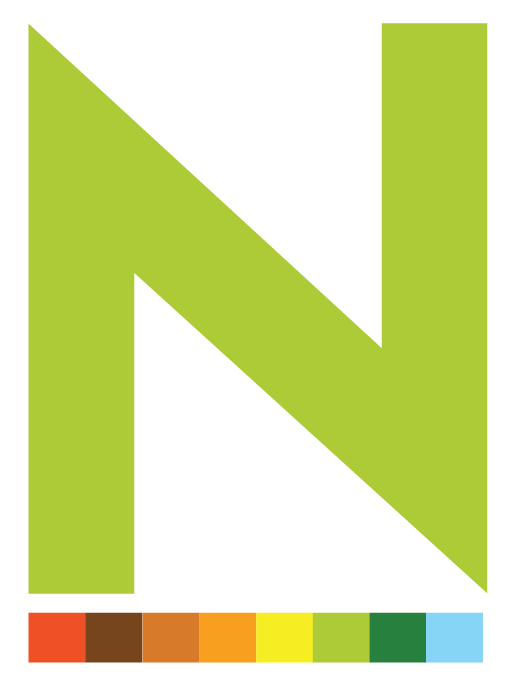Starting a blog can be a daunting task, but with these right strategies for starting a successful blog, you will find that it will be a smooth, painless ride. We’ve gathered 13 expert tips from CEOs, founders, and content creators to help you get started. From fostering active audience engagement to adopting a dynamic SEO strategy, these insights will guide you on your blogging journey.
- Foster Active Audience Engagement
- Enhance User Experience
- Strategically Target Keywords
- Start Small and Simple
- Know Your Audience for Success
- Maintain Consistent Posting
- Tailor the Content to Your Audience
- Discover Unique Voice and Niche
- Implement Content Pyramid Strategy
- Focus On Evergreen Content
- Build Content Around Your Niche
- Embrace Authenticity
- Adopt a Dynamic SEO Strategy
Foster Active Audience Engagement
Co-founder, Adrian Pereira gives one of the strategies for starting a successful blog. “An essential aspect to consider when launching a blog is the conscious effort to connect and interact with your audience actively. You establish a strong and loyal community by fostering a genuine connection and valuing their input.
This facilitates a meaningful exchange of ideas and cultivates a sense of belonging among your readers. Creating a space where they feel heard and appreciated encourages their continuous engagement.
Through active audience interaction, you can develop a lively blog that beckons them to return for more stimulating content. Remember, genuine engagement is the key to building a thriving online community.”
Enhance User Experience
Himanshu Sharma is a CEO and Founder providing his insight for all bloggers. “When embarking on the journey of starting a blog, one crucial strategy sets the stage for success—creating an engaging blogging experience that goes beyond just the words on the screen. Studies show that the average human attention span has decreased to a mere 8 seconds (Microsoft, 2020).
To captivate readers, incorporate multimedia elements such as eye-catching images, videos, and infographics. Enhance user experience with easy navigation, mobile responsiveness, and interactive features. Actively engage with your audience by responding to comments and fostering a sense of community.
For instance, when I started my travel blog, I shared captivating stories and created immersive travel guides with stunning visuals and travel tips. I encouraged readers to share their own experiences and engage in discussions.”
Strategically Target Keywords
Marketing Assistant, Jaya Iyer lists another one of many strategies for starting a successful blog. “One important strategy when starting a blog is to target keywords that are less competitive initially and that you can easily rank for. This approach helps establish your blog’s authenticity and relevance in Google’s eyes.
After you’ve built some authority, you can then target more competitive keywords with comprehensive pillar pages and in-depth blog posts. It’s about climbing the SEO ladder strategically. First, get noticed with low-hanging fruits, then aim for the top ranks with more competitive keywords.”
Start Small and Simple
Ellen Stone, Founder and CEO explains the significance of simplicity. “Starting a blog doesn’t need to be time intensive. Start with smaller, simple articles so you find your tone of voice and audience. People don’t want to read 2,000 words from someone they don’t know about a dense topic. Think short and snappy and work up to longer, more technical posts once people have gotten to know you.”
Know Your Audience for Success
Fouder, Saikat Ghosh provides details about knowledge of your target audience. “One important strategy that should be considered while starting a blog is knowing the target audience. If you know for whom you are going to create the blog, your content will be attractive and engaging and might yield desired results.
Knowing the audience also gives you some more valuable insights. For example, a clear vision of the depth you should dive into while choosing your content. This is crucial, as something highly technical or profound might drive your visitors away.
Another important point about knowing your visitors is, it also forces you to understand what is important to them, which, without a doubt, is highly precious for a blog owner. Therefore, when you know your audience, you know exactly what you are doing with your blog, and that is the key to success.”
Maintain Consistent Posting
Basana Saha is a Founder and shares another one of many strategies for starting a successful blog. “It is crucial to establish a regular posting schedule before starting a blog. Consistency is key in attracting and retaining readership, and will also improve search engine rankings. Plan out a schedule that works for you and set realistic goals for the amount of content you want to produce each week or month.
Stick to this schedule and avoid irregular posting, as it can lead to a loss of readership and trust. Use tools like editorial calendars and social media management platforms to stay organized and committed to your posting schedule. Remember, regular posting is the foundation for building a successful blog that engages and keeps readers.”
Tailor the Content to Your Audience
CEO, Meesha Gerhart defines another strategy to keep in mind. “One important strategy to keep in mind when starting a blog is to understand your target audience and tailor your content specifically to their needs and interests. Understanding who you’re writing for allows you to create valuable, engaging, and relevant content that resonates with your readers.
By identifying your target audience, you can determine their demographics, interests, and pain points, enabling you to address their specific challenges and provide solutions. This strategy helps build a loyal and engaged readership base, as people are more likely to return to a blog that consistently delivers value to them.
Knowing your audience allows you to refine your content creation process, optimize your marketing efforts, and establish a strong brand identity. So, invest time in researching and understanding your target audience to develop a successful blogging strategy.”
Discover Unique Voice and Niche
Vikrant Shaurya, whom is a CEO reveals another significant strategy for creating a blog. “One important strategy to keep in mind when starting a blog is to find your unique voice and niche. Define your passion and expertise.
By offering valuable insights, sharing your authentic perspective, and providing solutions to their problems, you can engage and build a loyal readership.
Focus on quality, consistency, and building a strong personal brand. By staying true to your unique voice and carving out your niche, you can create a blog that stands out and resonates with your audience.”
Implement Content Pyramid Strategy
Founder and Editor, Stephan Wenger lists another one of many strategies for starting a successful blog. “Create a content pyramid. A big mistake many bloggers make is to create content without structure across topics. The results are brief articles that are separate from one another. The hierarchy remains flat.
The result is that Google does not understand what your blog is about. Poor rankings are the consequence.
One strategy to overcome this is a content pyramid:
1.) Write cornerstone content. Long, in-depth articles about a central topic. 5,000-7,000 words. This is the foundation of your blog. The headlines of these articles summarize your blog.
2.) Create long-form articles that support these cornerstone contents. This is the next, more detailed step. 1,500-2,500 words. Use internal linking and a clear hierarchy to help your cornerstone content.
3.) Standard articles. These articles are relatively short (800-1,000 words) and highlight one idea. They fit within one cornerstone you’ve created.
With this approach, you position your blog right from the start.”
Focus On Evergreen Content
Ricci Masero is a Marketing Manager and administers another strategy for creating a blog. “When starting your blogging journey, it’s important to use a strategy that ensures your content stands the test of time. If you are hoping to have your blog consistently rank on search engines, captivating readers both now and in the future.
To achieve this, it’s essential to craft evergreen content that remains relevant and resonates with your audience indefinitely, unless the topic specifically demands a timely approach. By adopting this method, you’ll ensure that your articles continue to make an impact long after they are written.”
Build Content Around Your Niche
Blogger and Content Creator, Angie Makljenovic expresses another one of many strategies for starting a successful blog. “The crucial strategy is to choose a niche and build a foundation of content around it. In today’s competitive blogging landscape, narrowing your focus is essential for standing out and attracting a dedicated audience.
Focusing on a niche helps you position yourself as an expert in that field. As you consistently produce valuable content, readers perceive you as a trusted authority. To choose a niche, consider your passions and expertise. Identify a topic that excites you and aligns with your knowledge base.
Once you’ve selected your niche, build a firm foundation of content. Create pillar articles that address key aspects, questions, or challenges within your niche, offering immense value to readers. Diversify your content format to engage your audience through written posts, videos, podcasts, or infographics.”
Embrace Authenticity
Matthew Brandenburg is a CEO, he produces another strategy. “Authenticity is the essential strategy when starting a blog. Being true to yourself, finding your unique voice, and sharing your passions are key. Engaging with readers and creating a sense of community is vital.
Avoid plagiarism and be original. Authenticity sets your blog apart, attracts loyal readers, and makes it shine in the crowded blogosphere. So, be genuine, enthusiastic, and unapologetically YOU. Happy blogging!”
Adopt a Dynamic SEO Strategy
Founder and Entrepreneur, Bayo Prihandito submits the last strategy for creating a blog. “The strategy we are using for starting our blog is called ‘Dynamic SEO-Integration’. Key to this is consistency and understanding of trending topics within our niche, ensuring that the blog stays relevant and engaging for readers.
Regular content creation increases website traffic, by providing Google more opportunities to index pages and bring organic growth. Besides, by interlinking various posts and pages, we encourage readers to explore more of the website and learn about our brand.
To showcase authority and expertise, we focus on in-depth articles on key topics our audience is searching for. We then extend their reach by sharing on social media and creating related infographics, videos, or podcasts when relevant.”
—————-
Special thanks to Featured for their continued help in the creation of this blog post. Click below for more strategies from the Nativa team regarding Online Marketing.



